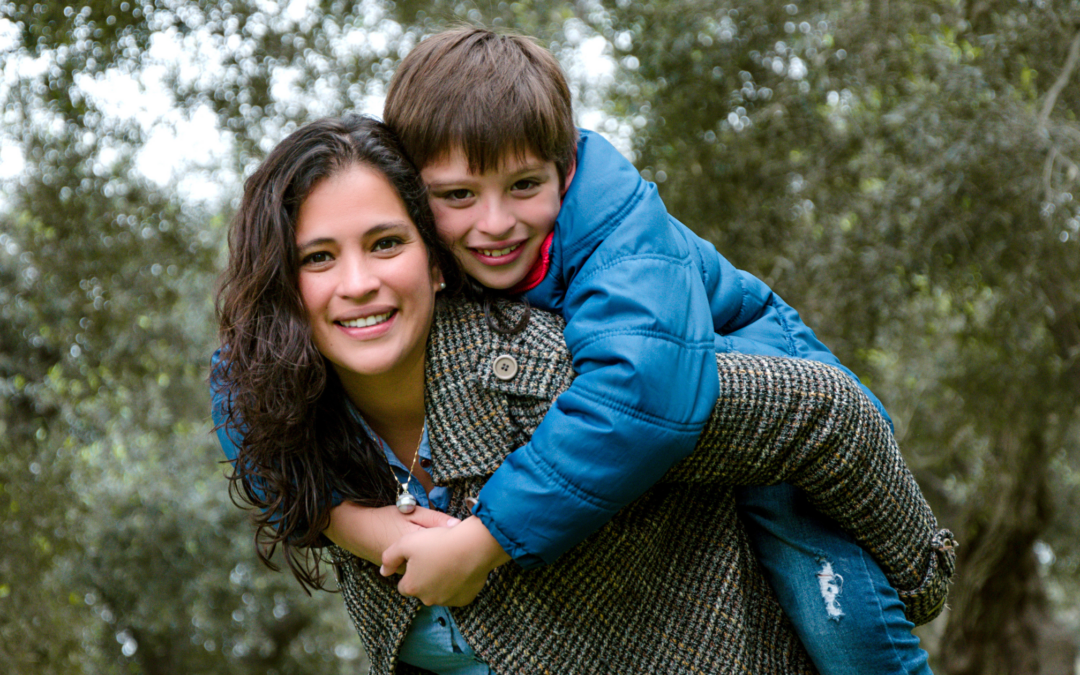Confessions of a Public School Teacher Turned Homeschooler
What I Had to Learn (and Unlearn)
As a public school teacher, I spent my days in a classroom with nearly thirty students. The schedule was structured down to the minute and a well-established routine. As daunting as those facts may seem, I fondly remember my time teaching. I loved the energy of a bustling classroom. Additionally, teaching allowed me to fulfill God’s purpose for my life: to be a positive, supportive, and encouraging influence on children.
That being said, I was thrilled to step away from the traditional educational system and take on the role of teacher at home to the two most special students I could ever have – my sons. What I didn’t expect was how many of the practices I had honed over the years would seamlessly translate into homeschooling and how much I’d need to unlearn about teaching in a traditional setting. As I often say, homeschooling is an extension of motherhood. While there are undoubtedly some differences between teaching in a school and teaching at home, these are my top three reflections.
Encouraging Success: How Positive Reinforcement Shapes Learning
When I taught fourth grade, one of the core strategies I always emphasized was using positive reinforcement over consequences. I found that acknowledging and celebrating students’ efforts, rather than focusing on their mistakes, encouraged a more motivated and engaged classroom environment. Whether through verbal praise, small rewards, or extra privileges, positive reinforcement helped build students’ confidence and fostered a sense of accomplishment. This approach worked wonders in shaping behavior and promoting a growth mindset.
Now that I homeschool my own children, I continue to prioritize positive reinforcement in our daily routine. Instead of dwelling on the moments when my children lack motivation or give less than their best effort, I make sure to praise their hard work, creativity, and perseverance. By focusing on what they’re doing right, I’ve noticed they’re more willing to take on challenges and are genuinely excited about learning. This method not only reinforces positive behaviors but also strengthens our relationship, which is essential to success in creating a happy home environment.
Rethinking Assessments: Prioritizing Running Assessments Over Rigid Testing
As a public school teacher, assessments were a non-negotiable part of the process. Tests, quizzes, and assignments were the primary gauge of student progress. Parents often harped on knowing their child’s ranking on national tests, and the district, as well as the state, wanted frequent data from all of the students. Some students thrived when given the chance to show what they knew on a test, while most struggled to overcome their anxiety and meet the time constraints of tests.
As a homeschool teacher, I’ve completely stepped away from traditional assessments, particularly at the elementary level. Instead of focusing on formal tests, I’ve opted for more informal, ongoing methods to understand my children’s learning progress. Instead of quizzes, I use natural, everyday opportunities to assess my sons’ understanding. If you feel the same way, you may consider a few of these ideas for a more organic way of assessing your child:
Reading
I would assess my students’ reading levels twice yearly to get a DRA or LEXILE level in the public school setting. After trying many reading assessments, I found I particularly liked ReadingA-Z assessments, which I still believe are an excellent tool. (If you’d like to try them, they are also available online for parents.) Currently, schools don’t prioritize assessments where teachers and students meet one-on-one to read aloud, and these assessments have sadly been traded in for online reading assessments where a computer records and analyzes a child’s reading.
As a homeschool mom, I assess my son’s reading level by having him read aloud daily as I pay attention to his fluency, speed, and pronunciation. Simply asking him to summarize what he has read or having a conversation about what he read is a simple way to check for retention, recall, and comprehension.
Math
When teaching in a classroom of more than two dozen kids, it wasn’t easy to check in with each child’s individual understanding as I taught a lesson. When you are working with your own child(ren), you have the gift of being able to see their progress firsthand. Never underestimate the power of running assessments – an ongoing, informal method of evaluating a child’s progress and understanding over time rather than relying on a single formal test or exam. Simply asking them to recall facts to check for fluency or asking them to reteach what they just learned to you is a quick way to check in with your child.
This approach, running records, allows me to gauge their progress in a more relaxed and organic way. It also promotes creativity and deeper exploration. I believe that children learn best when allowed to explore ideas and interests without the looming pressure of a formal assessment. As we know, studying material with the pressure to perform on a test doesn’t produce long term retention of information. If I notice gaps in their understanding, we take time to revisit the concept, ensuring they master it at their own pace—without the fear of failing a test.
A Consistent Philosophy: Fostering A Genuine Love of Learning
One thing that has remained unchanged throughout my transition from public school teacher to homeschool educator is my teaching philosophy. From the very beginning of my career, I believed that learning should be holistic. I’ve always felt that education shouldn’t just be about memorizing facts and passing tests—it should be an experience that sparks curiosity, encourages discovery, and fosters a genuine love of learning.
When I taught in the classroom, I was always looking for creative ways to make lessons more engaging. For example, when teaching science, I loved dressing up in a lab coat and acting out a “mad scientist” persona to bring the subject to life. I’d enthusiastically dive into experiments, explaining scientific principles with a mix of humor and excitement. When I taught the human body systems, I’d wear scrubs to class and encourage my students to do the same. It was all about creating an immersive experience. We didn’t just learn about each system from a textbook; we lived it. I’d explain how the lungs expand during inhalation while we mimicked the process, creating a memorable, multisensory learning environment with balloons. Incorporating hands-on activities, allowing my students to feel, touch, and experiment, made abstract concepts more tangible and memorable.
As the years passed, the freedom to teach this way became more and more limited. Now that I’m homeschooling my own children, I am able to hold these principals close again. Ultimately, my teaching philosophy hasn’t changed; it’s simply evolved. The tools may be different, and the setting may have shifted from a classroom to our living room, but the core belief remains the same: learning should be inspiring.
Reflecting on My Journey: The Best of Both Worlds
Reflecting on my journey from public school teacher to homeschool educator, I can see how each experience has shaped the way I approach learning. While public school provided a more rigid structure and a focus on meeting standards, homeschooling has given me the flexibility to adapt lessons to my children’s unique needs and interests. What I’ve come to realize is that the foundation of good teaching—clear goals, structure, engagement, and meaningful relationships—transcends the setting. Whether in a bustling classroom or a quiet home, those core principles continue to guide me.
As homeschooling parents it’s easy to feel defeated when a day of lessons feels derailed or full of distraction. Perhaps your hard days have had you wondering if your child would be doing more if they were in a traditional school. As someone who has seen both sides of the coin, allow me to reassure you that classroom teaching had countless distractions and hard days. Group learning has many educational benefits, like scaffolding between students, but nothing beats one-on-one learning that is tailored to your child, their learning style, and their pace.
Homeschooling has allowed me to deepen my connection with my kids, but I also carry forward valuable lessons learned from my time in public school. Both worlds have their strengths, and in combining the best of both, I’m able to create a nurturing, effective learning environment that I never could have imagined when I first stepped into the classroom.






